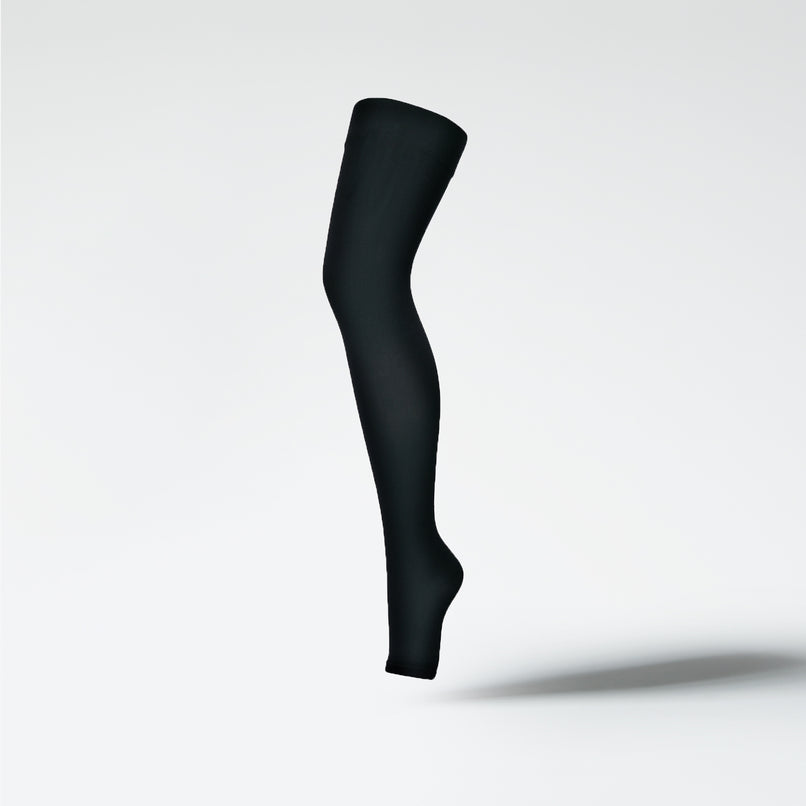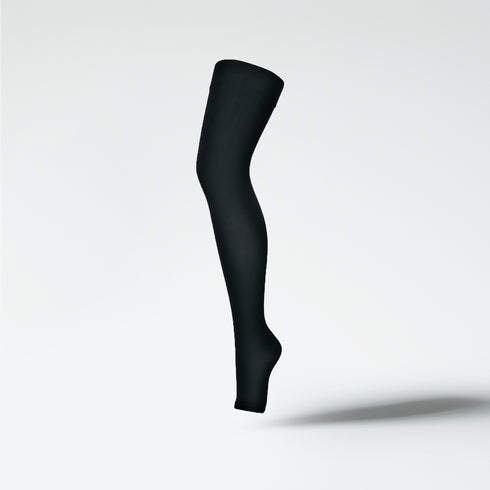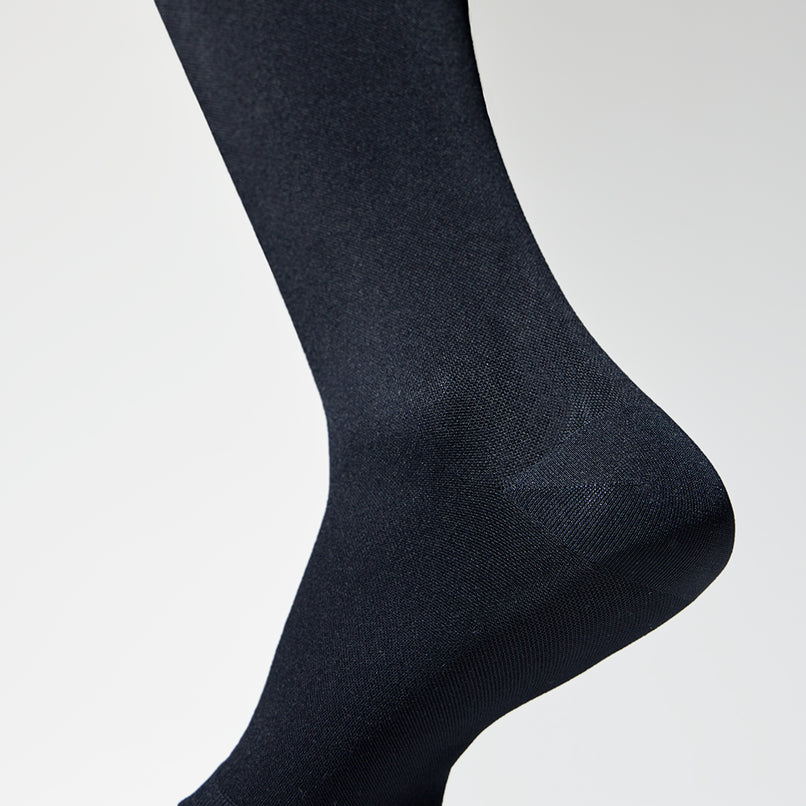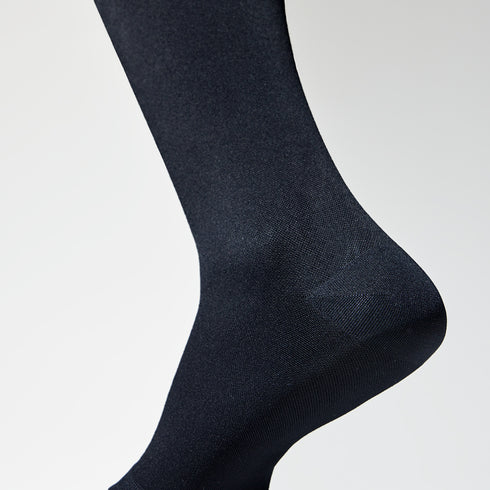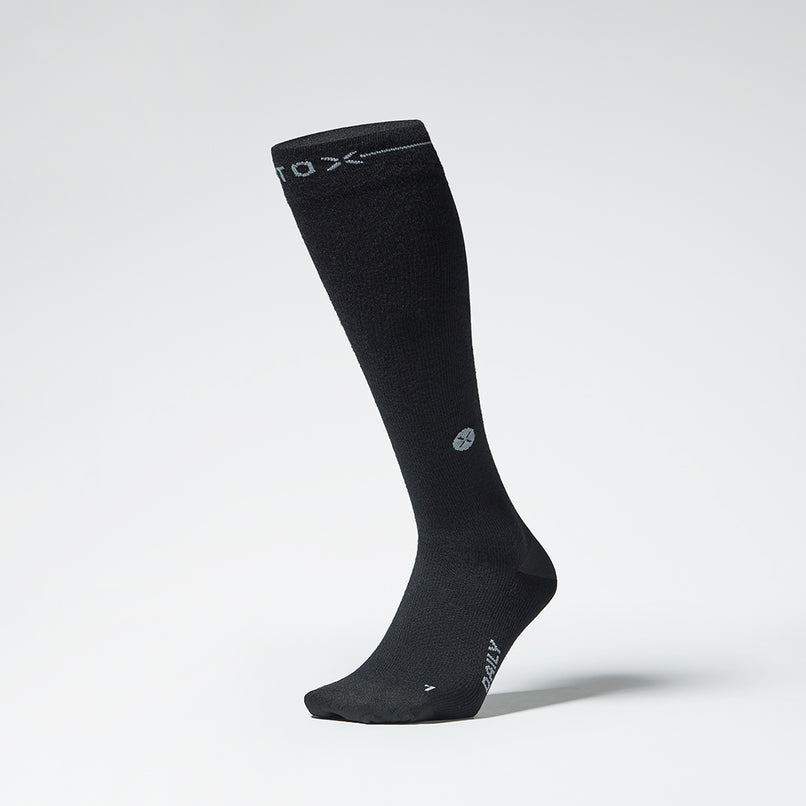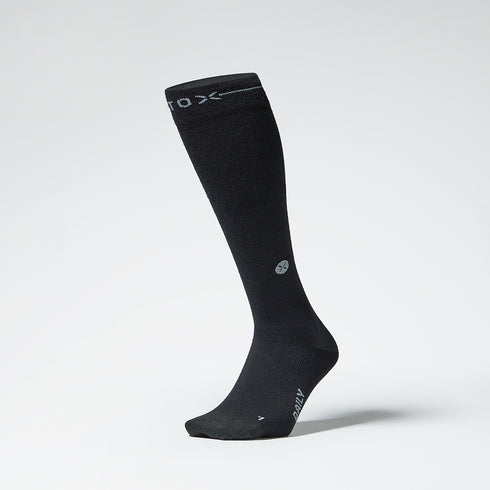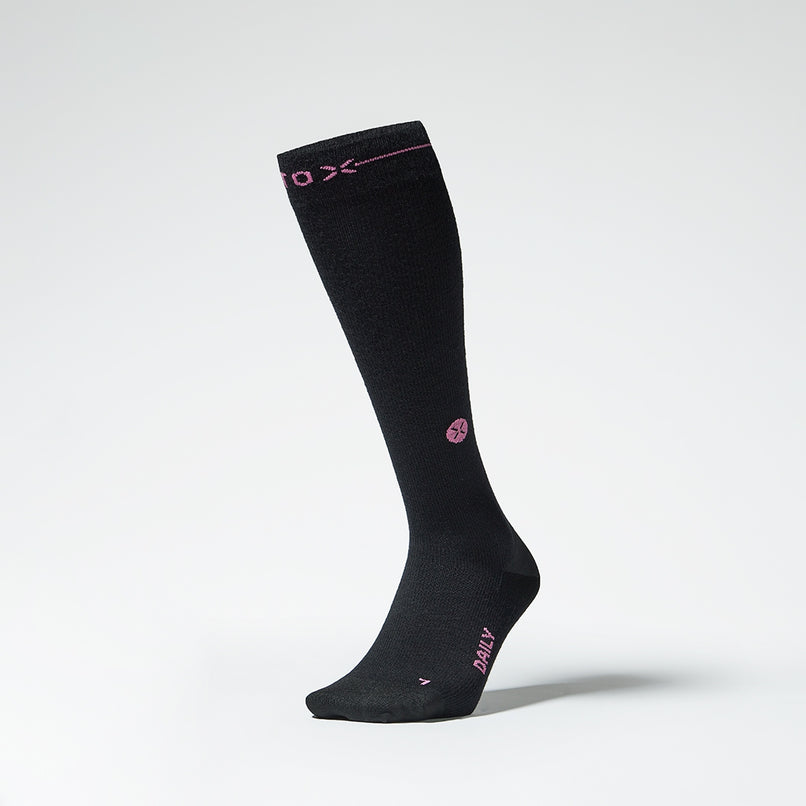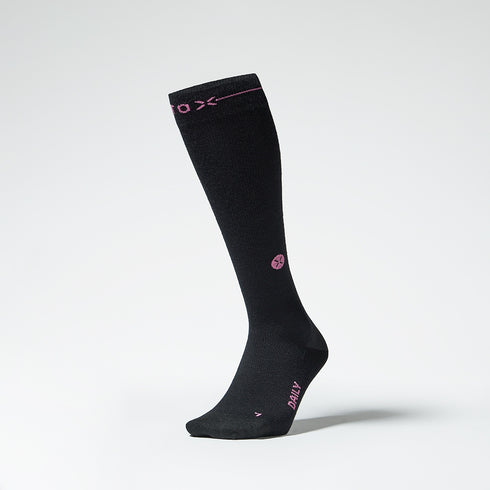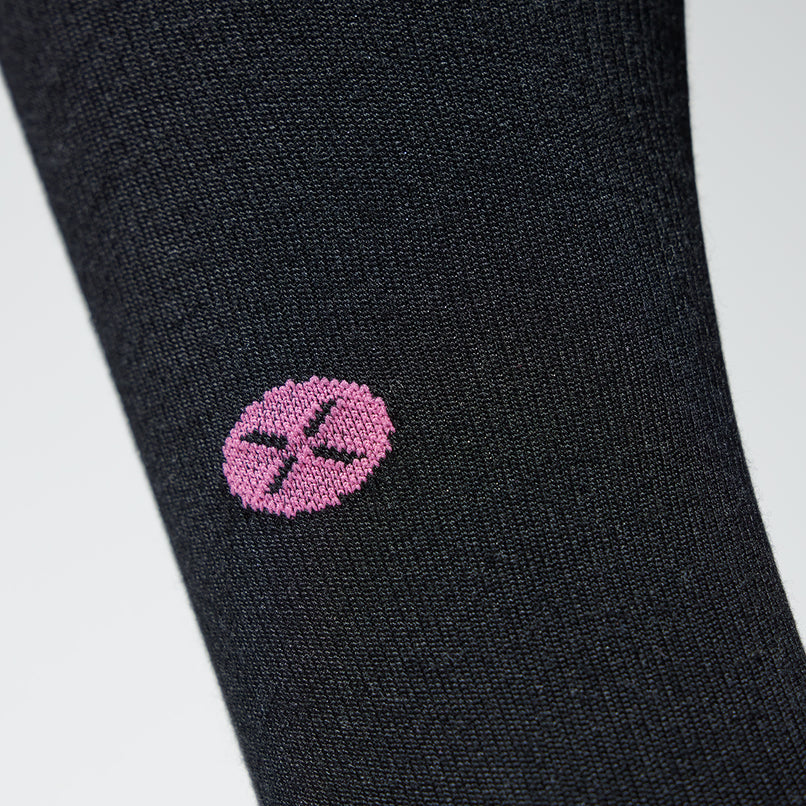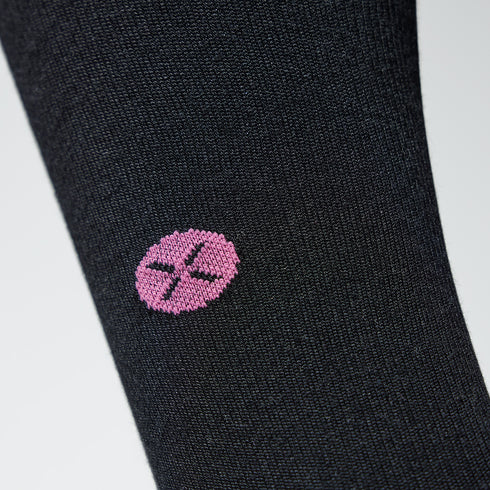How to diagnose thrombosis? Causes and prevention of thrombosis

What is Thrombosis?
Thrombosis is defined by medical professionals as vascular disease or circulatory disorder in which a blood clot or thrombus forms in the blood vessel. This blood clot thus clogs the vein or artery and prevents normal blood flow in the body, which in turn can lead to sometimes severe tissue damage. It can also arise based on changes in the vascular walls, blood flow and blood composition. Thrombosis usually develops in the area of small veins in the calf muscles and spreads from there into larger veins. Depending on the location and size of the blood clot or thrombus, different symptoms can manifest themselves. In the initial phase, thrombosis only causes minor discomfort and therefore often goes unnoticed. Those affected first think about tiredness and exhaustion before going to the doctor.
The first symptoms of thrombosis are a slight pulling and tingling sensation, most commonly in the legs, and a slight urge to move them. Also, sudden pain in the calves, swollen legs, and pressure in the calves are very typical. Thrombosis is also dangerous as it can lead to other conditions, such as pulmonary embolism.
But how does thrombosis occur?
A thrombus is usually formed by blood clotting, which is supposed to be a protective mechanism. For example, the body protects the coagulation system from bleeding to death after an external injury. To do this, he clots the blood and closes the wound in this way. However, the blood in the uninjured vessels should continue to flow normally. In this case, the clot creates a disruptive obstruction to blood flow. The risk of pulmonary embolism increases when the blood's natural ability to clot also increases.
In the body there is what is known as a balance between the mechanisms in the blood that keep it fluid on the one hand and the mechanisms that lead to blood clotting on the other. As soon as this balance is disturbed in any way, a disease such as thrombosis can result. There are several factors that can promote the development of thrombosis, such as phlebitis, damage to the vessel walls or a change in the composition of the blood, which can lead to an increased willingness to clot. All of these factors increase risk.
In general, three different causes for the development of thrombosis can be defined:
The normal blood flow is disturbed by other factors. If, for example, the blood vessel walls are damaged by deposits or if they show other damage because they are constricted from the outside, normal blood flow can be prevented and thus also the first signs.
The blood can become "thicker" after operations, paralysis or prolonged immobility (e.g. after a longer stay in hospital) and thus flow more slowly through the veins.
Just as the blood can flow more slowly, it can also flow faster due to genetically determined coagulation disorders, autoimmune or cancer diseases and thus favors the factors for developing thrombosis.
No less noteworthy are factors such as: Certain foods, drugs or toxins that may affect blood clotting, dehydration, pregnancy, birth control pills, dilated veins and varicose veins, damage such as injuries and bruises, limbs trapped by external pressure, Smoking, alcohol, degenerative changes that can be age-related or sitting for a long time with restricted mobility (e.g. when traveling by public transport or by private car). Even with certain procedures, such as the insertion of an artificial knee or hip joint, vascular occlusion would occur in more than 50% of cases without suitable prevention of thrombosis. Another factor is also severe obesity, as well as age, dehydration and various cardiovascular diseases.
In addition to these factors, there are also numerous hereditary factors at play. The most common congenital thrombophilia is the so-called APC resistance or "Factor V Leiden". This disorder is found in about 5% of the population, particularly in women who take a hormonal contraceptive such as the pill. Other congenital causes include: protein S deficiency, protein C deficiency, antiphospholipid antibody syndrome, prothrombin mutation, and antithrombin deficiency.
How can you prevent thrombosis?
Above all, it is important to take a disease such as thrombosis seriously, as it can become dangerous if left untreated. In addition to basic prevention, there are comprehensive helpful measures to avoid the immediate occurrence of this disease as much as possible. If you take care of your diet, avoid smoking and alcohol and also get enough exercise, you don't have to worry so much when it comes to thrombosis.
Among other things, it is very important to exercise regularly. Even daily walks can promote blood circulation and do the body good. Our legs are primarily dependent on support through movement, muscle relaxation and contraction. Sitting or standing for long periods is not good for you at all and these factors influence the risk factors. Alternating showers can also be a good way to prevent thrombosis. It is still important to avoid other risk factors such as obesity, smoking and alcohol and to promote other measures such as fluid intake. Experts recommend drinking at least two liters of fluids a day. However, sugary drinks such as lemonade or alcohol should be avoided. Water, teas and diluted fruit juices are recommended. Coffee without sugar and milk is also possible.
Thrombosis prophylaxis or thromboembolism prophylaxis is known as a term that encompasses all therapeutic measures and processes to prevent the development of thrombosis. Depending on the location and size of the thrombus or blood clot, doctors distinguish between arterial and venous thrombosis. However, the measures taken to prevent thrombosis are primarily aimed at deep vein thrombosis, since this form can occur most frequently. Prevention is intended to counteract the three causes referred to as Virchow's triad. Firstly, it should strengthen the venous return flow of the blood and at the same time prevent damage to the vein walls and reduce the blood's susceptibility to clotting.
In medicine, a distinction is often made between physical and medicinal thrombosis prophylaxis. Physical thrombosis prophylaxis aims to optimize blood flow and has a mechanical effect on the legs. These measures include nursing measures such as promoting movement, supporting the position of the person concerned and compressing the veins. This can be promoted by medical thrombosis stockings or compression stockings and intermittent pneumatic compression therapy. In contrast to physical thrombosis prophylaxis, the procedure for drug thrombosis prophylaxis is different. Drugs such as heparins, various anticoagulants and fondaparinux are used here.
Prevention occurs primarily during a hospital stay in the so-called “perioperative period”. This period refers to the time before and after an operation. There are patients who are subject to increased risk factors and are therefore particularly at risk of thrombosis. Among other things, these are: splints, paralysis, chronic venous insufficiency, rigid associations, vascular changes such as varicose veins, pain-related relieving posture or heart failure. On the basis of the existing risk factors, doctors still differentiate between primary and secondary thrombosis prophylaxis. The first occurs when there is no venous disease, while the second is used for mild venous disease and subjective symptoms.
Thrombosis injections and anti-thrombosis stockings or compression stockings are also recommended as important measures. Daily thrombosis injections with heparin can prevent the formation of the thrombus or blood clot and are therefore often used after an injury or surgery or even during other illness-related immobilization. Often, however, so-called anti-thrombosis stockings, also known as compression stockings, are used by those affected. These are particularly elastic stockings made of skin-friendly and very thin fabric. They can either reach up to the knee or even beyond the knee and up the thigh. The trick of the compression stockings is that they exert a slight pressure on the veins and thus accelerate the blood flow. These stockings are particularly recommended if the person concerned has a tendency to develop varicose veins.
Thrombosis self-test: How do I recognize the first signs?
Now and then we can do a self-test before we go to the doctor. Although it is sometimes difficult to distinguish between the symptoms, since they can initially be associated with many other ailments, you can prepare yourself a little.
Typical early signs of thrombosis include:
1. Warm swellings on the legs
A first sign of a disturbed blood flow are swollen legs. Due to dilated veins or veins blocked by blood clots, the first slight symptoms appear, which manifest themselves as pain in the legs.
2. Feeling of heavy legs
Even before the first swellings in the legs, those affected usually feel tension pains, which are comparable to a sore muscle, and a feeling of heaviness, which improves when the affected leg is elevated, in the leg area.
3. Bed rest can be dangerous
If a patient is about to undergo surgery, the risk of thrombosis also increases. Prolonged immobilisation of the legs, which act like a pump for the vessels when walking or moving, puts an extreme strain on the venous system and also promotes the formation of a blood clot or thrombus. For this reason, doctors usually use blood-thinning medication, thrombosis injections or compression stockings after the surgical procedure.
4. Visibly blue veins
In the advanced stages, blood vessels on the legs turn blue and the lower legs can often feel warm and swollen. A lying position also increases the risk of thrombosis.
5. Thrombosis while traveling
A lack of exercise on long-haul flights and longer journeys by car or public transport promote the formation of blood clots in blood vessels. The often cramped seating position isn't helpful here either, because the legs can become so wrapped up that they interfere with smooth blood flow. In such situations, especially in people who are more prone to varicose veins, it is recommended to use compression stockings or even heparin injections.
If thrombosis is suspected, it is of course advisable to immediately consult a specialist who can confirm the suspicion using various methods. But there are a few questions that the potentially affected person can ask themselves before they see a doctor. Some of these points are, for example, whether the legs have recently been paralyzed or immobile, whether the person has been lying down for more than three days before or after an operation, whether the whole leg is swollen and the swelling is showing up along the deep veins, if there is swelling of more than three centimeters in the lower leg compared to the unaffected leg, the affected person may be suffering from cancer or hereditary diseases have been proven. You can also ask yourself whether collateral veins have formed somewhere or whether there is edema or swelling in the affected leg. Another point is the question of whether the person concerned has previously suffered from thrombosis or whether there are known cases within the family circle.
If most of these questions are answered positively, the person concerned should immediately go to a specialist who can use various methods to diagnose thrombosis. In this case, a blood test is often ordered, whereby the so-called D-dimers are determined. These substances are created and manifest in the blood if a blood clot has formed anywhere in the blood vessels. The D-dimers are still referred to as biomarkers and their concentration in the blood gives the first indication of thrombosis.
In addition to taking a blood sample, ultrasound examinations such as compression sonography and vascular imaging or phlepography are also typical. If the suspicion of thrombosis is confirmed afterwards, it is important that therapy is started immediately. The doctor will decide accordingly which therapy is best for the person concerned. Drugs that inhibit coagulation and make the blood more fluid are usually immediately prescribed and the affected extremity is fitted with a compression bandage so that this increases the external pressure on the veins. In this case, it is important to estimate the correct dosage of drugs such as heparin, since it is always necessary to check to what extent the body tolerates the anticoagulant drugs. This is followed by further measures to dissolve the thrombus or even to surgically remove it.
Recommended for you

Niek van Spronsen
Niek has been part of the STOX Energy Socks team since 2022, writing informative and inspiring articles about compression socks, sports, health, and nutrition. With a passion for an active and healthy lifestyle, Niek shares valuable tips and advice to help athletes and health-conscious readers improve their performance and well-being.
Latest related articles
Show moreAll products
Discover now
Niek van Spronsen
Niek has been part of the STOX Energy Socks team since 2022, writing informative and inspiring articles about compression socks, sports, health, and nutrition. With a passion for an active and healthy lifestyle, Niek shares valuable tips and advice to help athletes and health-conscious readers improve their performance and well-being.
